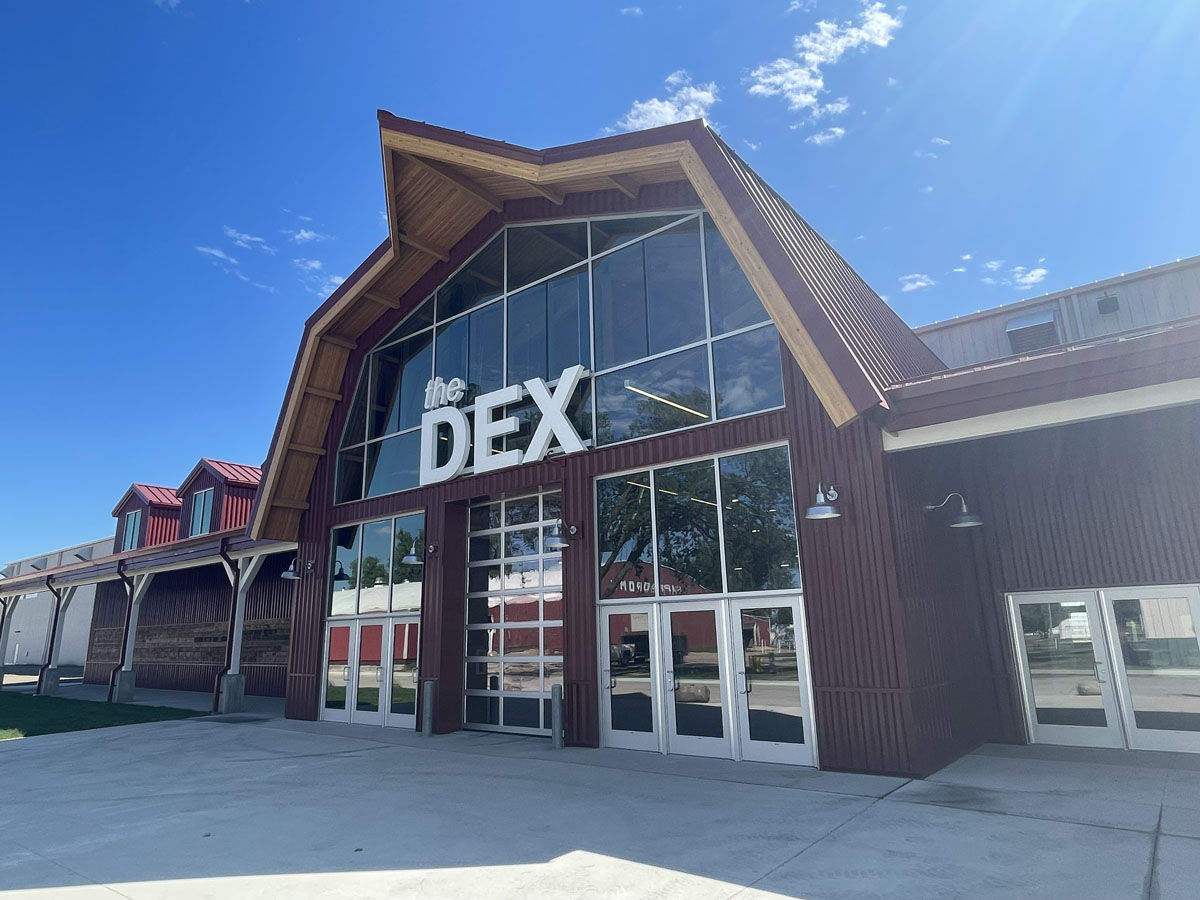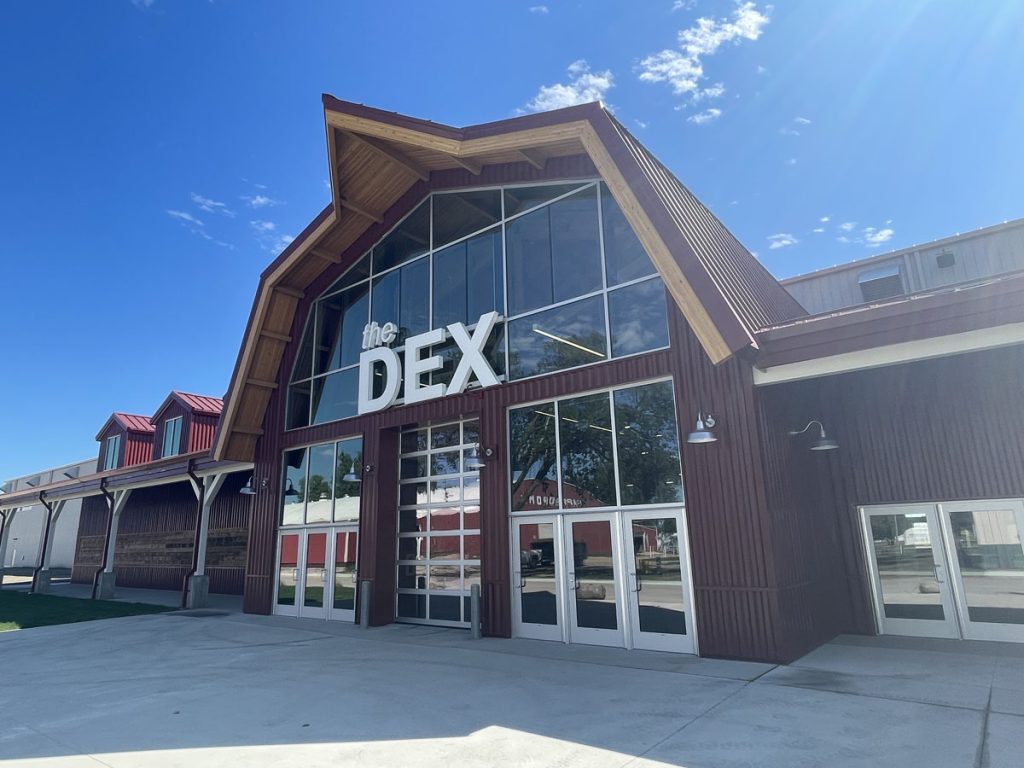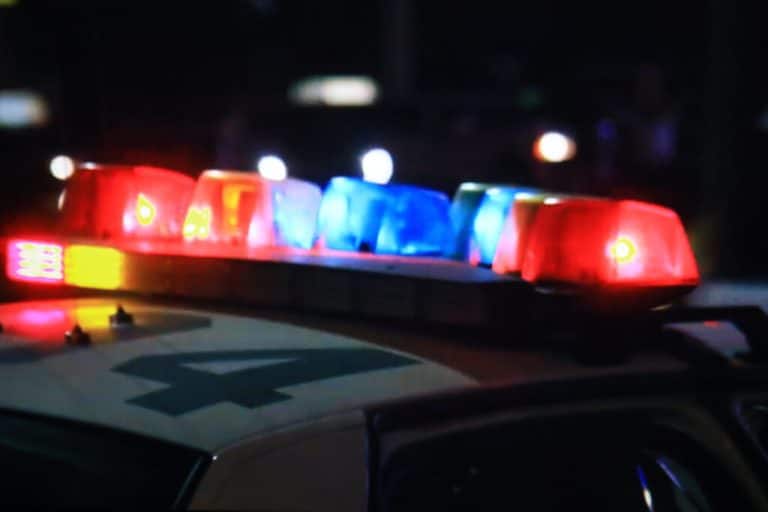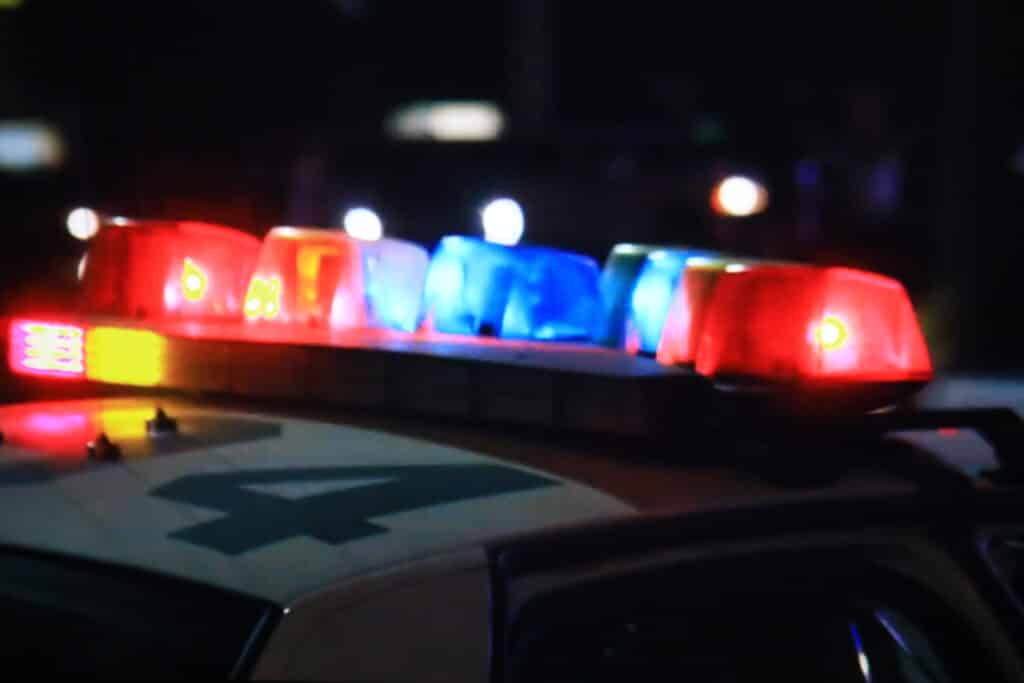HURON, S.D. – In her December 2020 budget address, Gov. Kristi Noem laid out a plan for a state-of-the-art events facility at the South Dakota State Fair to replace the old livestock complex, which had been destroyed by fire about a month earlier.
The governor’s proposal sought to double the size of the former facility with a heated building for 4-H and Future Farmers of America events to be unveiled in 2022. Noem also spoke of luring national rodeo and equestrian competitions to spark revenue for the state fair and the community.
“Our goal is to become the No. 1 choice for equestrian and livestock events in the country and for attracting new opportunities to South Dakota,” Noem told legislators during her 2020 address. “I look forward to seeing you all in the new livestock complex at the 2022 State Fair.”
More than 2-½ years later, with the 2023 State Fair beginning Aug. 31, pandemic-related construction delays and cost overrides have hampered the governor’s vision. The Dakota Events Complex, known as the DEX, was not ready to open in 2022, and its bleachers won’t be available for this year’s fair, dampening some of the enthusiasm for its unveiling.
The grand opening slated for opening day is now described as a ribbon-cutting ceremony, with beef exhibits and shows still scheduled at the facility during the fair. The official grand opening celebration is planned for 2024 as part of the Governor’s Agricultural Summit.
“The concrete is poured and the building is there. But until we get the bleachers, the project is not complete to the point where people can see what it’s all about,” said Jim White, a longtime Huron resident and former state legislator who led the DEX fundraising effort.
“It’s a work in progress, needless to say.”
White gave a tour of the sprawling 150,000 square foot complex as crews on scissor lifts did electrical work near the roof. The barn-themed modern entrance on the west side features large signage, wood-beamed ceilings, restrooms and a concessions area. On the east side of the building, crews were still working to complete watering stations for livestock.

Huron’s Jim White, who chaired the local fundraising committee for the Dakota Events Complex, said there is optimism that the facility can spark revenue by hosting national rodeo and equestrian events. (Photo: Stu Whitney / South Dakota News Watch)
Cost overruns for complex draw scrutiny of lawmakers
Construction delays coincided with the state fair raising ticket prices for the first time since 2015. Daily admission increased from $6 to $10 for adults, with weekly passes up to $40 from the previous $25. For youth ages 6-15, tickets are $5 a day and $20 for the 2023 fair, which runs Aug. 31-Sept. 4. Advance tickets are sold at a discounted rate.
Legislators have so far appropriated $29 million for the Dakota Events Complex, which can hold two full-size equestrian arenas or 1,700-plus cattle stalls. Those appropriations include $18 million in general funds, $6 million in private fundraising and much of the rest from insurance payments from the loss of the old facility.
The first round of funding, $20 million, was approved in 2021, and a second round of $9 million was rubber-stamped in 2023 after costs started to escalate. The facility has been scaled back from 200,000 square feet to 150,000 and from a seating capacity of 7,000 to 5,000 due to concerns about the overall price tag.
Noem’s office and the Department of Agriculture and Natural Resources (DANR), which oversees the financial management of the state fair, attributed budget overruns and construction delays to the COVID-19 pandemic and backorders on steel.
But the funding and outlook of DEX has drawn the scrutiny of lawmakers, reviving a decades-old debate over whether the state fair should stand on its own financially or be subsidized by taxpayers.
‘South Dakota is an ag state, so you want a nice facility’
State Sen. Jean Hunhoff, a Yankton Republican and co-chair of the Joint Appropriations Committee, has criticized the lack of a business plan to show how the DEX will bring in enough revenue to make up for increased expenditures needed to manage and market the complex.

Jean Hunhoff
The state fair fund had a negative cash flow of $1.5 million in fiscal year 2022, dropping its balance from $2.8 million to $1.3 million, according to the Office of the State Treasurer. The fair received a transfer of $721,582 from state general funds in 2021 due to pandemic-related revenue losses, based on Noem’s recommendation.
“Are they ever going to be totally self-sufficient? I don’t think so,” said Hunhoff.
“But they’re also not at the level that we expect them to be. South Dakota is an ag state, so you want a nice facility, but you need to be able to market it. They’re indicating to us, ‘If you build it, they will come.’ Well, you need to have programming that prompts people to come there, especially if you want (the Legislature) to continue to contribute.”
Attendance at the five-day fair was 192,279 in 2022, the highest since the pandemic but lower than every year between 2014 and 2019.
The Noem administration denied News Watch requests to interview Agriculture and Natural Resources Secretary Hunter Roberts and State Fair Manager Peggy Besch.
Ticket prices raised to help fund DEX management
Besch presented a plan to lawmakers in June 2022 to raise ticket prices and camping fees for the 2022 state fair. She noted that the proposed prices were less than rates charged at state fairs in Minnesota, Wisconsin, Iowa, Colorado and North Dakota.
The fee increases were projected to generate $280,000 annually, Besch told the Legislature’s Rules Review Committee, which would be used in part to hire staff to manage and promote the DEX. She acknowledged at the time she didn’t have a specific business plan to reflect those needs or expenses.
The process faltered when Hunhoff chastised Besch and the State Fair Commission for not mentioning the fee increases at a DANR budget hearing that took place during session, instead trying to push it through the five-member committee panel.
The fee changes were not allowed to go into effect.
“I was very verbal about them bypassing appropriations,” said Hunhoff. “I said, ‘Had you told us you were going to do that by putting it in your budget, we would have been more receptive, but you really didn’t follow the process.’ So those rules got reverted back (by a vote of 4-1).”
During the 2023 legislative session, the fee increases were part of the DANR’s budget outline, along with the additional $9 million in appropriations to complete construction of the DEX.
Both requests passed as part of the budgetary process.

The South Dakota State Fair had a five-day attendance of 192,279 in 2022, the highest total since the pandemic but lower than any of the six years prior to COVID-19. (Photo: Stu Whitney / South Dakota News Watch)
‘We’re looking for some sort of concrete plan’
Roberts and Besch faced questions about their premise that the events center will spark increased revenue by luring national events to Huron on a year-round basis.
“Most of the activities they’ve hosted in the past have been spring and summer, and now they have to look at utilizing that complex all year round,” said Hunhoff. “We’re taking them to task by saying, ‘We’re being supportive in helping you to finance this building and create this state-of-the-art complex, but what are you doing to market it?’ We want to see some metrics come out of that.”
She added: “One of the things that came up was, ‘Where are all these people going to stay? What’s going to be different? How are you going to showcase this complex and bring people to Huron for these events?’”
The most recent count from the South Dakota High School Activities Association had Huron with 425 hotel rooms, compared with 5,100 for Rapid City, 4,300 for Sioux Falls, 1,095 for Mitchell and 890 for Aberdeen. There are also more than 1,200 camping sites at the Huron fairgrounds.
Along with Joint Appropriations Committee co-chair Rep. Mike Derby, R-Rapid City, Hunhoff sent a letter of intent to Roberts on May 3 requesting a report “detailing revenues and expenditures for State Fair division operations with DEX operations separate for calendar year 2023 and each year thereafter” to get a better sense of how the events center is performing.
The information, the letter said, would be used by the joint committee “as one basis for the fiscal oversight of your agency and its continued funding.”
South Dakota State Fair has history of financial concerns
Concerns about solvency have frequently plagued the state fair, requiring corrective action from lawmakers.
In 2001, with the fair $500,000 in debt, legislators authorized $700,000 in general funds and shifted budget and financial management to the Department of Agriculture rather than the State Fair Commission.
Two years later, after the 2003 event lost $300,000, then-Agriculture Secretary Larry Gabriel shifted the fair schedule from July to its former slot in early September, trying to take advantage of Labor Day weekend. But financial troubles threatened the fair’s future, with Gov. Mike Rounds refusing at the time to rule out terminating the event if circumstances didn’t change.
“I can see that as a possibility if we don’t begin to make progress on bringing the fair back into a profitable position,” Rounds said at the time. “I think the Legislature will accept some subsidy for a period of time, but I really think they want to see it do a better job of making it on its own.”
In 2005, after the fair posted a shortfall of nearly $1 million on its 100th anniversary, Gabriel announced that the fair would be shortened to its current five-day schedule, ending on Labor Day, in the hopes of boosting attendance and cutting costs.

Larry Rhoden
Legislators were mixed on whether the event was worth saving, according to an Associated Press survey of lawmakers conducted in 2006. Of those who responded, 49% said they believed the state should continue to subsidize the fair, while 27% opposed continuing support and 24% were undecided.
“We have to make a decision: Is it worth having, and if it is, are we willing to step up to the plate?” House Republican Leader and current Lt. Gov. Larry Rhoden said at the time.
“Instead of having an ongoing discussion, make it as viable as it can be on its own and then just assume we pay the rest of the tab.”
Subsidies for state fairs are not uncommon, although larger operations such as the Minnesota State Fair and Iowa State Fair exist independent of operating revenue from state government. North Dakota’s annual event currently receives $570,000 annually in general fund revenue to help defray costs. Nebraska, meanwhile, earmarks 10% of state lottery proceeds to the State Fair Board, which amounted to $5.6 million in 2021.
Tragedy leads to opportunity with fundraising effort
Noem, whose family participated in 4-H and equestrian activities at the Beef Complex in Huron, called it a “scary night” when the building was destroyed by fire in the early morning hours of Oct. 31, 2020. No people or animals were injured by the blaze, which investigators determined was caused by a faulty cord on a refrigerator in the concession area.
The governor knew that replacing the complex would take an organized effort.

A fire destroyed the Beef Complex at the South Dakota State Fair on Oct. 31, 2020. (Photo: Hannah Olsen / KELO TV)
“In South Dakota,” she said in her 2020 budget address, “we know out of adversity comes opportunity and a chance to build for the future.”
White, a retired Wells Fargo executive who served as Senate Assistant Majority Leader from 2015 to 2016, put Noem’s optimism into action. He chaired a local fundraising effort that brought in $6 million, or more than 20% of the appropriated funds for the DEX project.
In addition to ag-based businesses such as Bank West, Butler Machinery, Agtegra and First Dakota National Bank, White said individual donors were also receptive to the idea of upgrading the livestock exhibition experience at the fairgrounds on a year-round basis.
“We just sold our story,” said White, who was appointed by Noem to the Game, Fish and Parks Commission in February. “The Beef Complex represented approximately 50 percent of revenue in previous years. And with the heated arena and so forth, I know that expectations will be above that for the future.”
DANR public affairs director Brian Walsh sent a statement to News Watch with a list of events booked for the DEX. That includes the South Dakota Rodeo Association Finals (2023 and 2024), National Barrel Horse Association State Barrel Race (2024), South Dakota Summer Spotlight Livestock Show (2024) and Red Power Round Up National Show (2026).
“Based on the widespread support of the facility and the interest in booking it, we believe the facility is living up to its design,” said the statement.
For state appropriators, the key will be making sure those expectations translate into financial reality. Such oversight, they said, is the best way to ensure that concerns about subsidizing the state fair with taxpayer money don’t reach crisis mode as they have in the past.
“You’ve got a community that invested, you’ve got ag-based people in the state that want these kind of showmanship places, and you’ve got the state as a partner,” said Hunhoff.
“We provided the capital. The question is how much more we’re going to provide going forward, and we need to evaluate that over the next two or three years. If there’s more support that’s needed, what’s it going to be, and is that a priority for the state?”













